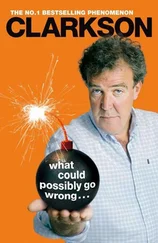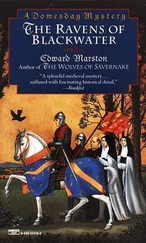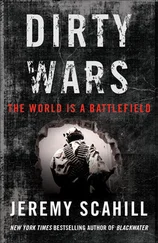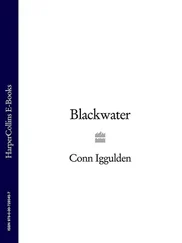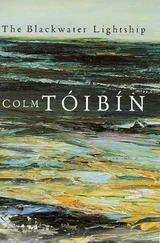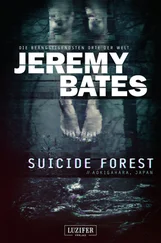Black’s greatest triumph in Sudan, therefore, resulted from the capture of an international fugitive whose notoriety long predated bin Laden’s. Billy Waugh described how, in Sudan, he was pulled off surveillance of someone who “wasn’t much of a big fish at the time”—Osama bin Laden—for “the biggest fish” in December 1993. 12Waugh described a meeting at the Khartoum Embassy where Black announced their new target: “In this city of one million souls, we would be responsible for finding and fixing none other than Ilich Ramirez Sanchez, the man known far and wide as Carlos the Jackal, the world’s most famous terrorist.” 13After the meeting, Waugh recalled, “Cofer Black pulled me aside and said, ‘Billy, this is the man. You’ve got to get this guy.’ At that moment, given the gravity evident in his voice, I knew the agency was making this a top priority…. I wanted to be the guy who caught this asshole.” 14Carlos was accused of a series of political killings and bombings throughout the 1970s and ’80s and, while Cofer Black was in Sudan, was perhaps the most famous wanted man in the world.
Black, Waugh, and the Jackal team caught a break when Carlos called a trusted bodyguard from overseas to keep him out of trouble, after Carlos’s guard had been thrown in a Khartoum jail for drunkenly waving a pistol at a local shopkeeper. 15They were able to ID the new bodyguard and his vehicle when he arrived in Khartoum and eventually traced the Toyota Cressida to the Jackal’s home. After months of careful and detailed surveillance from a rented apartment with a view of his home, the move was made in August 1994. 16Waugh wrote of entering the CIA station that day, unsure of Carlos’s fate: “Immediately, Cofer and the fine lady station manager handed me a glass of champagne. Cofer bellowed, ‘Toast, Billy, you sweet son of a bitch. Carlos is in prison in France.’” 17The arrest of the Jackal secured Cofer Black’s legendary status in CIA circles and remains one of his top career bragging points. After Khartoum, Black was named in 1995 as CIA Task Force Chief in the Near East and South Asia Division, continuing his monitoring of bin Laden’s network, before a brief stint in 1998 as Deputy Chief of the Agency’s Latin America Division. 18In 1999, Black was awarded a significant promotion, heading up the CIA’s Counter-Terrorism Center (CTC). 19
By the time Black officially took over at CTC, his nemesis, bin Laden, was a household name, publicly accused of masterminding and ordering the 1998 bombings of the U.S. Embassies in Kenya and Tanzania, which killed more than two hundred people, among them twelve U.S. citizens. Bin Laden left Sudan shortly after Black did, allegedly relocating to Afghanistan. Once a name known only in intelligence circles and in the Arab and Muslim world, bin Laden was now on FBI most-wanted posters. Among Black’s duties beginning in 1999 was overseeing the special bin Laden unit of the CTC, known as Alec Station—internally referred to as the “Manson family,” for its cultlike obsession with “the rising al Qaeda threat.” 20Black dove enthusiastically into planning and overseeing covert operations. “He would make pronouncements that were meant to be dramatic and tough-guy colloquial—to make you think, Oh, my God, this guy’s got brass balls, and he knows the score,” said Daniel Benjamin, head of the National Security Council’s counterterrorism team in the Clinton administration, in an interview with Vanity Fair . “He’d say things like, ‘No more screwing around. This is going to get rough, and people are gonna come home in body bags. That’s all there is to it. You guys gotta know that.’ He’d talk about body bags all the time.” 21
Shortly after Black officially took over the CTC, the CIA made a damning admission to the White House in early December 1999. “After four years and hundreds of millions of dollars, Alec Station had yet to recruit a single source within bin Laden’s growing Afghanistan operation,” asserted investigative author James Bamford. “It was more than embarrassing—it was a scandal…. It was a dangerous time to be without intelligence. Within days, the 9/11 plotters began their operation.” 22While Black was technically in charge, he had only recently been named to that position, and he would later complain that he and his colleagues within the CTC were not given adequate support to take out bin Laden. “When I started this job in 1999, I thought there was a good chance I was going to be sitting right here in front of you,” Black told the 9/11 Commission in April 2004. “The bottom line here, and I have to tell you, and I’ll take part of the blame on this, I kind of failed my people despite doing everything I could. We didn’t have enough people to do the job. And we didn’t have enough money by magnitudes.” 23Black asserted that the CTC “had as many people as three infantry companies [that] can be expected to cover a front of a few kilometers” even though “our counterterrorism center has worldwide responsibilities.” 24Black said that before 9/11, when it came to “numbers of people, finances, and operational flexibility,” these were “choices made for us. Made for the CIA and made for my counterterrorism center.” 25
There were indeed budget cuts happening during Black’s tenure—in 1999, he faced a 30 percent reduction in the CTC’s cash operating budget, including in the bin Laden unit. 26Some analysts, though, said lack of resources was not the heart of the problem. Rather, they say, it stemmed from Black and his allies’ strong emphasis on paramilitary covert operations over the more tedious work of infiltrating Al Qaeda or bin Laden’s circle. 27In 1999, briefing documents Black’s office had prepared for the Clinton White House acknowledged that “without penetrations of [the] UBL organization,” the CIA was in trouble. Black’s brief said that there was a need “to recruit sources” but added that “recruiting terrorist sources is difficult.” 28What was done (or not) about this problem would be the source of a substantial amount of finger-pointing after 9/11.
In the two years before 9/11, Black’s strategy to fight Al Qaeda focused on using Afghanistan’s neighbor, Uzbekistan, as a launching pad into Afghanistan. 29Black clandestinely traveled to the capital of Tashkent and oversaw U.S. funding and training of an Uzbek paramilitary force that would supposedly try to kidnap bin Laden or his deputies through “covert snatch operations.” 30Uzbekistan’s dictator, Islam Karimov, was fighting his own war against Islamic groups in the country and was adept at using threats of Islamic rebellion to justify wide-ranging repressive domestic policies, including arresting prodemocracy activists. 31When the CIA came knocking, Karimov was happy to use the veneer of a war against bin Laden to justify covert military aid from Washington. While the CIA was able to use the country’s air bases for some operations and install communications and eavesdropping equipment inside Uzbekistan, the end result of Black’s covert U.S. support was that the brutal leader, Karimov, received millions of dollars of CIA money, which he used “to keep his torture chambers running,” according to Bamford. “And the commando training would be useful to continue the repression of women and ethnic minorities.” 32Karimov was also known to have political enemies boiled to death; a practice the British ambassador in the country said was “not an isolated incident.” 33
Black also kicked up U.S. covert support for Ahmed Shah Massoud, the “Lion of Panjshir” and his Northern Alliance, which regarded bin Laden and Al Qaeda as enemies. On at least one occasion as CTC director, Black met face to face with Massoud—in Tajikistan in the summer of 2000. 34Black and his units’ heavy reliance on Massoud in confronting Al Qaeda was controversial—even within the intelligence world. Massoud’s forces represented an ethnic minority in Afghanistan’s complicated landscape and were based in the north, far from bin Laden’s main operations. There were also broader concerns. “While one part of the CIA was bankrolling Massoud’s group, another part, the CIA’s Counter-Narcotics Center, was warning that he posed a great danger,” according to Bamford. “His people, they warned, were continuing to smuggle large amounts of opium and heroin into Europe. The British came to the same conclusion.” 35White House counterterror expert Richard Clarke opposed the military alliance with Massoud, describing the Northern Alliance as “drug runners” and “human rights abusers.” 36Black, though, told his colleagues that this support was about “preparing the battlefield for World War Three.” 37Massoud would not live to see it, though. He was assassinated, allegedly by Al Qaeda operatives posing as journalists, on September 9, 2001. 38During this time, Black was also pressing the Air Force to accelerate its production of an unmanned Predator spy drone that could be equipped with Hellfire missiles to launch at bin Laden and his lieutenants. 39
Читать дальше


